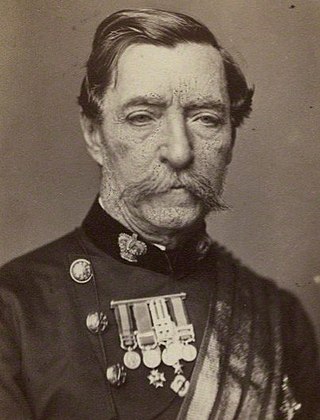
Field Marshal Robert Cornelis Napier, 1st Baron Napier of Magdala was a British Indian Army officer. He fought in the First Anglo-Sikh War and the Second Anglo-Sikh War before seeing action as chief engineer during the second relief of Lucknow in March 1858 during the Indian Rebellion of 1857. He also served in the Second Opium War as commander of the 2nd division of the expeditionary force which took part in the Battle of Taku Forts, the surrender of Peking's Anting Gate and the entry to Peking in 1860. He subsequently led the punitive expedition to Abyssinia in July 1867, defeating the Emperor Tewodros II of Ethiopia with minimal loss of life among his own forces and rescuing the hostages of Tewodros.
Mora is a town in northern Cameroon. Mora has a population of 55,216 making it the 5th biggest city in Far North.
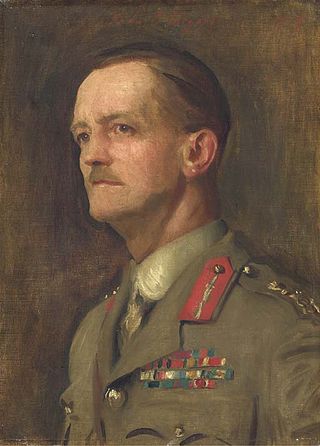
Lieutenant General Sir Charles Macpherson Dobell was a Canadian soldier who served with the Royal Welch Fusiliers of the British Army.

Major General Sir Edward Northey was a senior British Army officer of the First World War who commanded a brigade on the Western Front until wounded in 1915. Returning to service in 1916, Northey took command of a colonial force in Nyasaland in the East African campaign, later becoming Governor of Kenya. He later served as a general of Territorial forces and retired in 1926.

The Hazara Expedition of 1888, also known as the Black Mountain Expedition or the First Hazara Expedition, was a military campaign by the British against the tribes of Kala Dhaka in the Hazara region of what is now Pakistan.
The 24th Hazara Mountain Battery (Frontier Force) was an artillery battery of the British Indian Army.

Admiral Sir Louis Henry Keppel Hamilton was a senior Royal Navy officer who was Flag Officer in Malta (1943–1945) and later served as First Naval Member and Chief of Naval Staff of the Royal Australian Navy. During his early career he was generally known as L. H. Keppel Hamilton.

The Kamerun campaign took place in the German colony of Kamerun in the African theatre of the First World War when the British, French and Belgians invaded the German colony from August 1914 to March 1916. Most of the campaign took place in Kamerun but skirmishes also broke out in British Nigeria. By the Spring of 1916, following Allied victories, the majority of German troops and the civil administration fled to the neighbouring neutral colony of Spanish Guinea. The campaign ended in a defeat for Germany and the partition of its former colony between France and Britain.
The Battle of Tepe on 25 August 1914 was the first skirmish between German and British forces during the Kamerun campaign in of the First World War. The conflict took place on the border between British Nigeria and German Kamerun, ending in British victory and German withdrawal from the station.
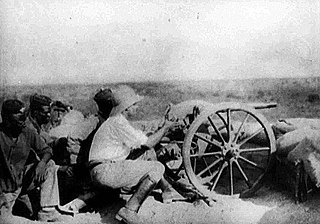
The First Battle of Garua took place from 29 to 31 August 1914 during the Kamerun campaign of the First World War between German and invading British forces in northern Kamerun at Garua. It was the first significant action to take place in the campaign and resulted in the German repulsion of the British force.
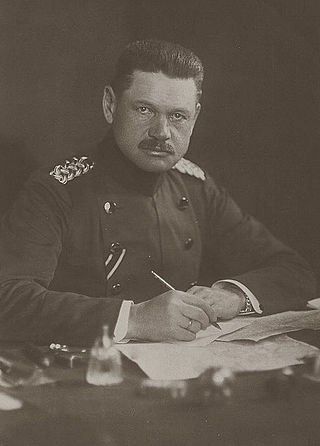
Curt Ernst von Morgen was a Prussian explorer and officer, later General of Infantry during World War I. He was a recipient of Pour le Mérite with Oak Leaves.
The Battle of Nsanakong or Battle of Nsanakang took place between defending British and attacking German forces during the Kamerun campaign of the First World War. The town of Nsanakong had been occupied by the British on 30 August 1914. On 6 September, German forces attacked, driving the British force over the border back into Nigeria.
The siege of Mora or siege of Moraberg, between Allied and besieged German troops, took place from August 1914 to February 1916 on and around the Mora mountain in northern Kamerun during the Kamerun campaign of the First World War. After more than a year of siege German forces on the mountain surrendered, following the escape of many German troops to the neutral Spanish colony of Río Muni. It was the second longest siege of the war, behind the Siege of Medina.
The Battle of Gurin took place on 29 April 1915 during the Kamerun campaign of World War I in Gurin, British Nigeria near the border with German Kamerun. The battle was one of the largest of the German forays into the British colony. It ended in a successful British repulsion of the German force.

The Second Battle of Garua took place from 31 May to 10 June 1915 during the Kamerun campaign of the First World War in Garua, German Kamerun. The battle was between a combined French and British force and defending German garrison and resulted in an Allied victory.
The Battle of Ngaundere or Battle of Ngaoundéré was a small engagement fought between German and British forces on 29 June 1915 during the Kamerun campaign of World War I. It resulted in a German defeat and British occupation of the town.
During the Battle of Banjo or Battle of Banyo, British forces besieged German forces entrenched on the Banjo mountain from 4 to 6 November 1915 during the Kamerun campaign of the First World War. By 6 November much of the German force had deserted, while the rest surrendered. The battle resulted in victory for the Allies and breakdown of German resistance in northern Kamerun.
The Second Battle of Jaunde involved the successful British and French assault on the German capital of Jaunde during the Kamerun campaign of the First World War. After the failure of the First Battle of Jaunde during the summer of 1915, the bulk of Allied forces had retreated to the Kele river. Following the Second Duala Conference where Allied commanders discussed the situation, it was decided that another assault should be attempted. Although the columns surrounding Jaunde were not in effective communication with one another, on 1 January 1916, British forces under Colonel Georges occupied the capital. By this time it had been abandoned by the German troops who had fled to the neutral Spanish colony of Río Muni. This Allied victory signaled the end of German resistance in Kamerun apart from the Siege of Mora which would continue for another few months.
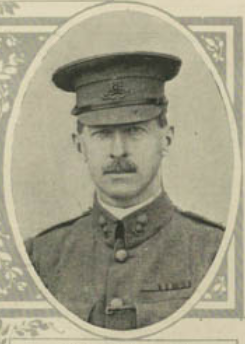
Brigadier-General Neil Douglas Findlay was a British Army general. A Royal Artillery officer, Findlay served in action on the Hazara Expedition of 1888 and in the Second Boer War. He was commended by General Redvers Buller for his actions during the latter and subsequently became a staff officer. After the outbreak of the First World War Findlay was promoted to brigadier general and appointed Commander, Royal Artillery of the 1st Infantry Division. Whilst serving in this capacity during the First Battle of the Aisne Findlay was hit by shrapnel from a German shell and killed. He was the first British general to be killed in the war.

Ernst Klaus Iwan Christian Friedrich Alfred von Raben was a German Major who had served as a commander of the Schutztruppe before surrendering at the Siege of Mora.











